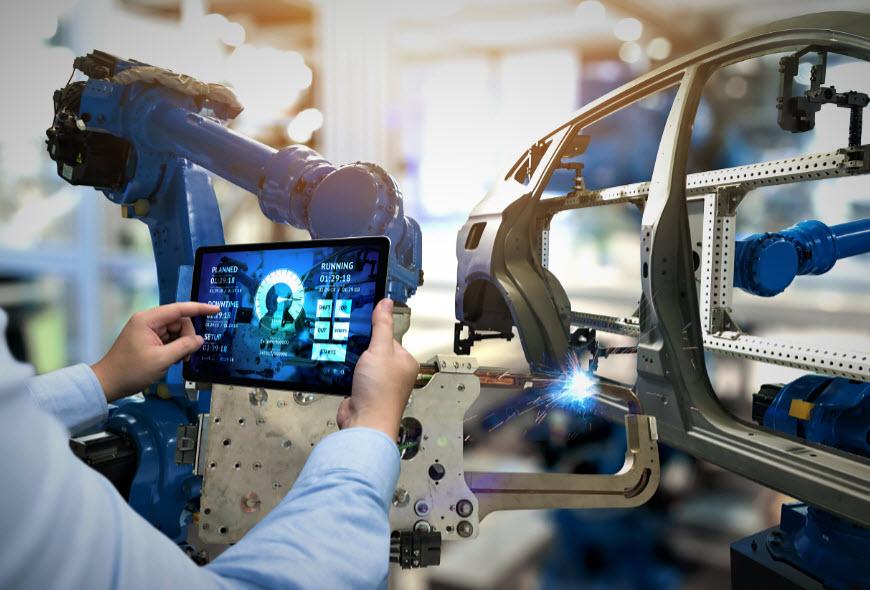For manufacturers considering or about to take their first steps towards machine monitoring, we’ve outlined 5 key steps to successful monitoring:
1) Define a Monitoring Project Plan
Implementing machine monitoring is not done overnight. It is important to plan your implementation carefully. Your plan should be realistic and based on clear objectives that define your vision and expectations amongst your team. Objectives should clearly outline the shop assets to be monitored and define KPIs. To increase the probability of successful adoption, make sure to avoid operator-focused KPIs and outline a plan for implementation that includes communication throughout the organization, including IT and the shop floor.
2) Review IT Capabilities & Requirements
To have a successful monitoring system, there is a need to define IT requirements upfront. Work with your IT team to identify how Ethernet will be provided to each device from which you wish to acquire data. Additionally, you will need to identify whether the server that will house your data should live in-house or in the cloud. Depending on your choice, there are other technical application requirements to be considered – such as network architecture, firewalls, isolating obsolete operating systems, internet access, data protection, etc.
3) Create a Data Collection Plan
Defining the data items you wish to collect and how they will be analyzed allows your team to best understand how you will deploy your monitoring efforts. Your team should understand the minimum data needed to support your KPIs. You will need to complete an equipment inventory by identifying each CNC and/or other devices from which you need to acquire data and outline their associated technical attributes.
It is recommended to employ a non-proprietary standards-based data collection strategy that allows you to avoid subscription-based connectivity. Consider collaborating with an experienced provider to identify data collection solutions, Adapters and other data acquisition devices that use the MTConnect® standard. Together you and the right provider can identify a plan that is designed to fit your unique needs both today and tomorrow.
4) Develop a Deployment Strategy
Before you begin, acceptance and buy-in from all areas of your organization is paramount. To make sure your team is aligned on clearly defined expectations, make sure everyone involved in the dialogue is clear on why you are taking steps to monitor machines. Your deployment strategy should be team-focused, encompassing an outline of IT requirements of the devices you wish to monitor, how the data will be collected, analyzed, and communicated. Be clear on how this data will influence internal relationships and make sure your deployment strategy is team-focused and driven by your goals.
5) Go Live with Install & Evaluation
Depending on the devices and/or sensors and their associated ages, you will have data access in as little as a few hours to a few weeks after going “live.” After your initial launch, you will need to evaluate and tweak configurations. During this process, it is important to be prepared for questions from your team looking to better understand the data, its accuracy and how you will be forming conclusions from it. Don’t be disappointed in your team’s initial perceptions and the limited values of OEE and/or utilization data. Instead, focus on incremental improvements that are appropriately selected to fit your team. Your efforts are worth it, but this process will likely feel unfamiliar to your team at first. It’s important to maintain clear communication throughout.
The reality is that each manufacturer’s plant floor differs as much as their data collection and infrastructure plans should. Each manufacturer has a unique business need and subsequently one-size-fits-all data acquisition software may not work for everyone. However, you can identify what your plant floor needs and develop a machine monitoring system that works for you and your data collection goals. If you’re ready, consider the above basic steps towards successful machine monitoring to best prepare to reap the benefits of connected manufacturing into the future.

